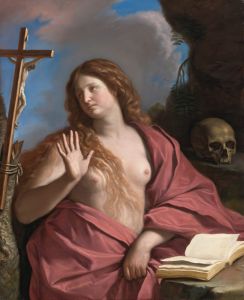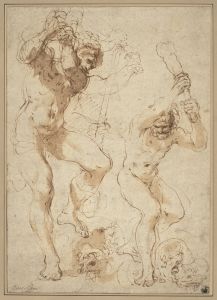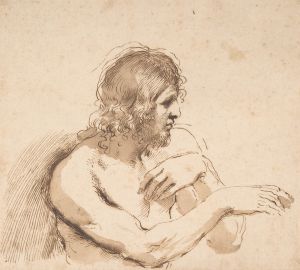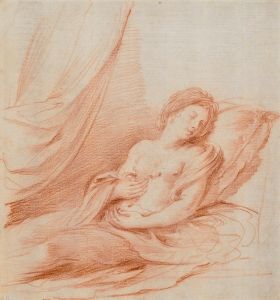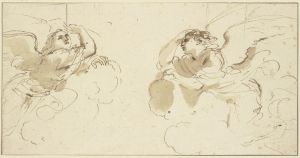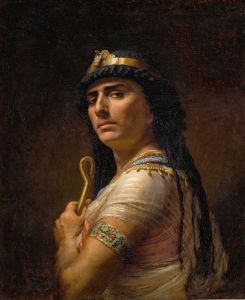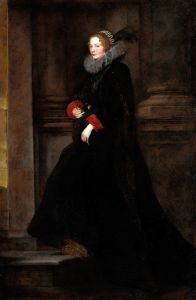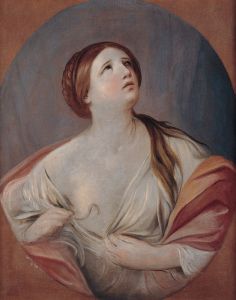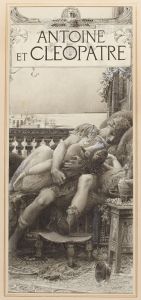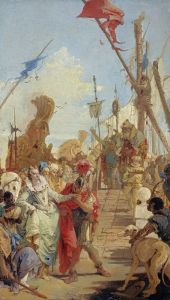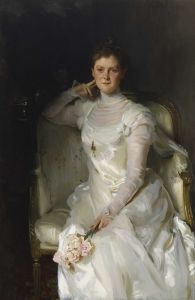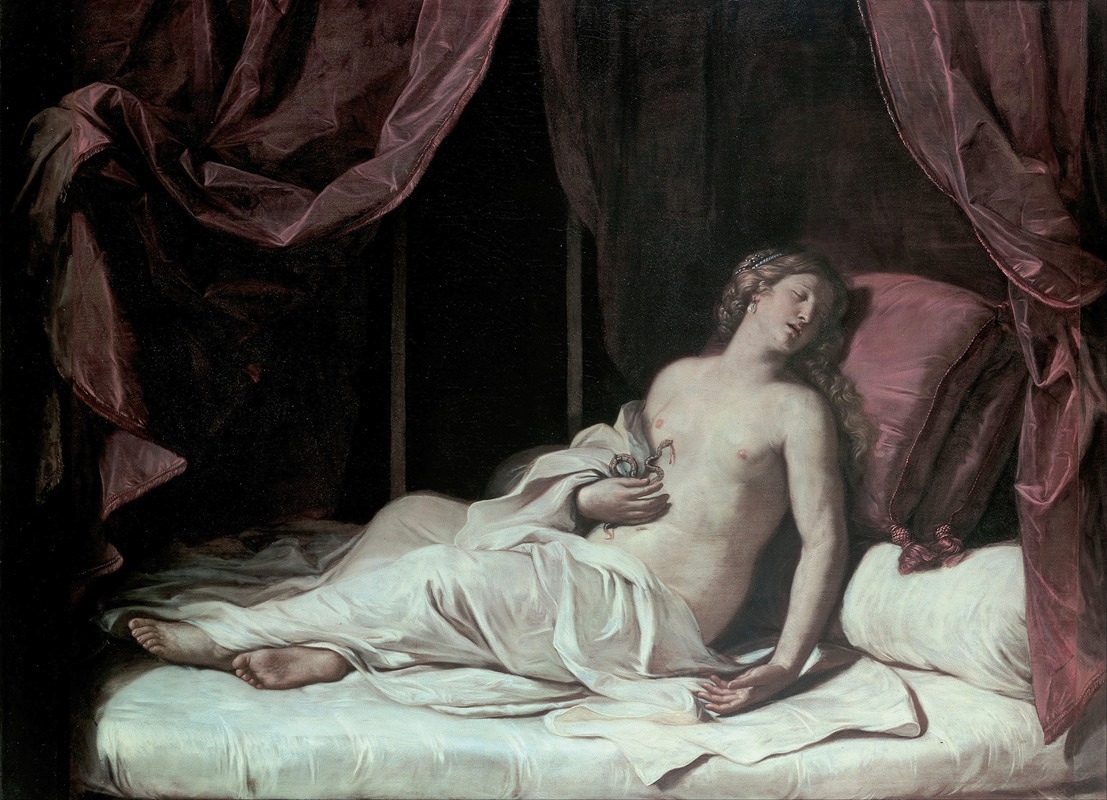
The Death of Cleopatra
A hand-painted replica of Guercino’s masterpiece The Death of Cleopatra, meticulously crafted by professional artists to capture the true essence of the original. Each piece is created with museum-quality canvas and rare mineral pigments, carefully painted by experienced artists with delicate brushstrokes and rich, layered colors to perfectly recreate the texture of the original artwork. Unlike machine-printed reproductions, this hand-painted version brings the painting to life, infused with the artist’s emotions and skill in every stroke. Whether for personal collection or home decoration, it instantly elevates the artistic atmosphere of any space.
The Death of Cleopatra is a painting by the Italian Baroque artist Giovanni Francesco Barbieri, more commonly known as Guercino. Created in 1621, this artwork is a significant example of Guercino's dramatic style, which is characterized by dynamic compositions and a masterful use of chiaroscuro—a technique that employs strong contrasts between light and dark to achieve a sense of volume and three-dimensionality.
Guercino was born in Cento, a town in the Emilia-Romagna region of Italy, in 1591. He was a prominent figure in the Baroque movement, known for his expressive and emotive works. The Death of Cleopatra is one of his notable paintings, capturing the dramatic moment of Cleopatra's demise. Cleopatra VII was the last active ruler of the Ptolemaic Kingdom of Egypt, and her death has been a subject of fascination and artistic representation for centuries.
In this painting, Guercino depicts Cleopatra in the moments following her suicide, which, according to historical accounts, was achieved by the bite of an asp—a venomous snake. The painting portrays Cleopatra in a state of serene resignation, a common interpretation in art that emphasizes her nobility and tragic fate. She is often shown reclining, with the asp either in her hand or nearby, symbolizing the cause of her death.
Guercino's use of chiaroscuro in The Death of Cleopatra enhances the emotional intensity of the scene. The light is focused on Cleopatra's face and upper body, drawing the viewer's attention to her expression and the details of her attire. The background is typically darker, which not only highlights the figure of Cleopatra but also adds a sense of depth and drama to the composition.
The painting reflects the Baroque era's fascination with themes of power, beauty, and mortality. Cleopatra's story, filled with political intrigue and personal tragedy, provided rich material for artists of the time. Guercino's interpretation is notable for its emotional depth and technical skill, capturing both the historical significance and the personal tragedy of Cleopatra's death.
Guercino's work was highly regarded during his lifetime, and he received numerous commissions from patrons across Italy and beyond. His paintings, including The Death of Cleopatra, are celebrated for their dynamic compositions and the artist's ability to convey complex emotions through his use of color and light.
Today, The Death of Cleopatra by Guercino is appreciated not only for its artistic merit but also for its contribution to the rich tapestry of Cleopatra's representations in art. The painting is a testament to Guercino's mastery of the Baroque style and his ability to bring historical and mythological subjects to life with vivid emotion and dramatic flair.






